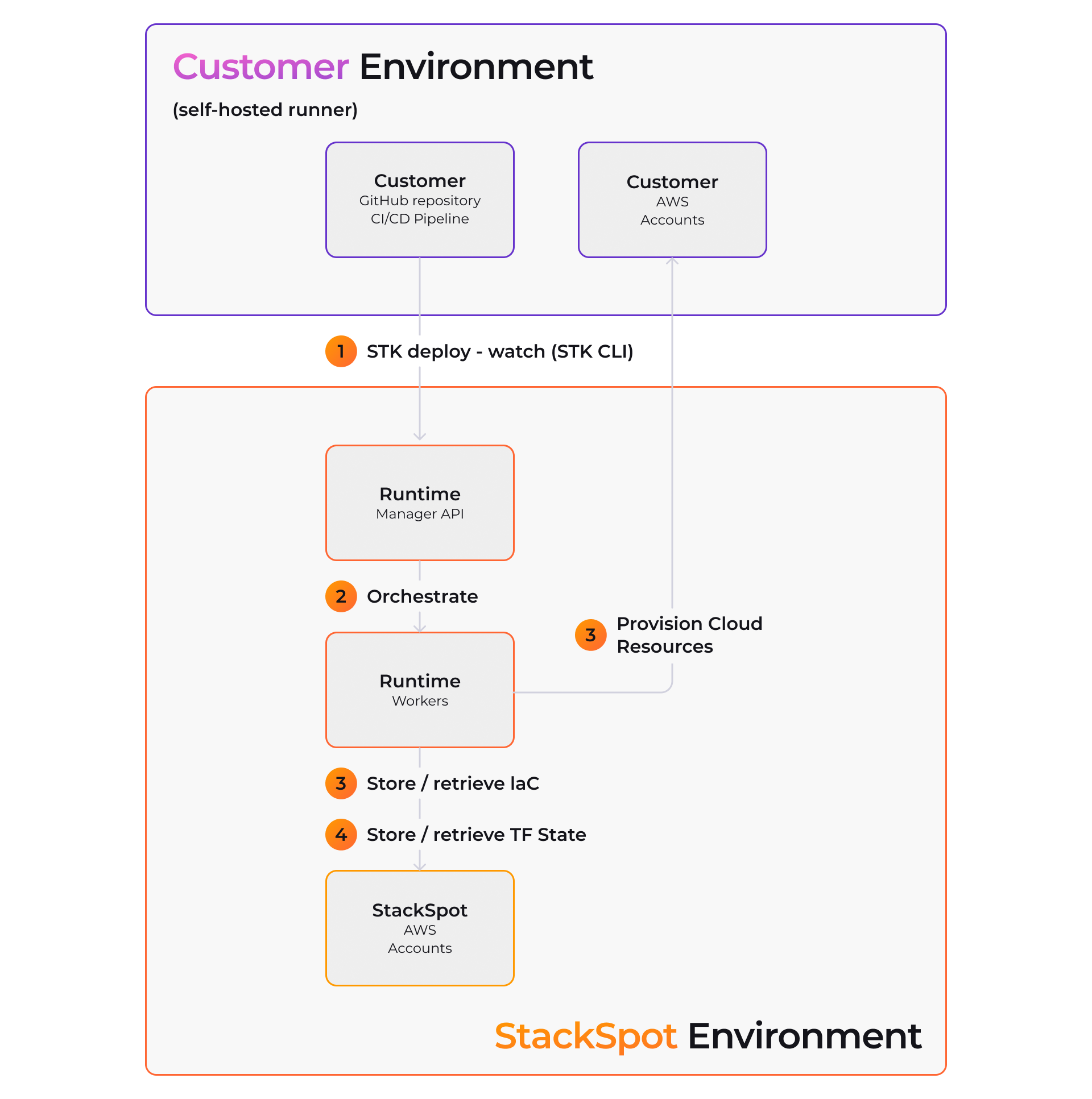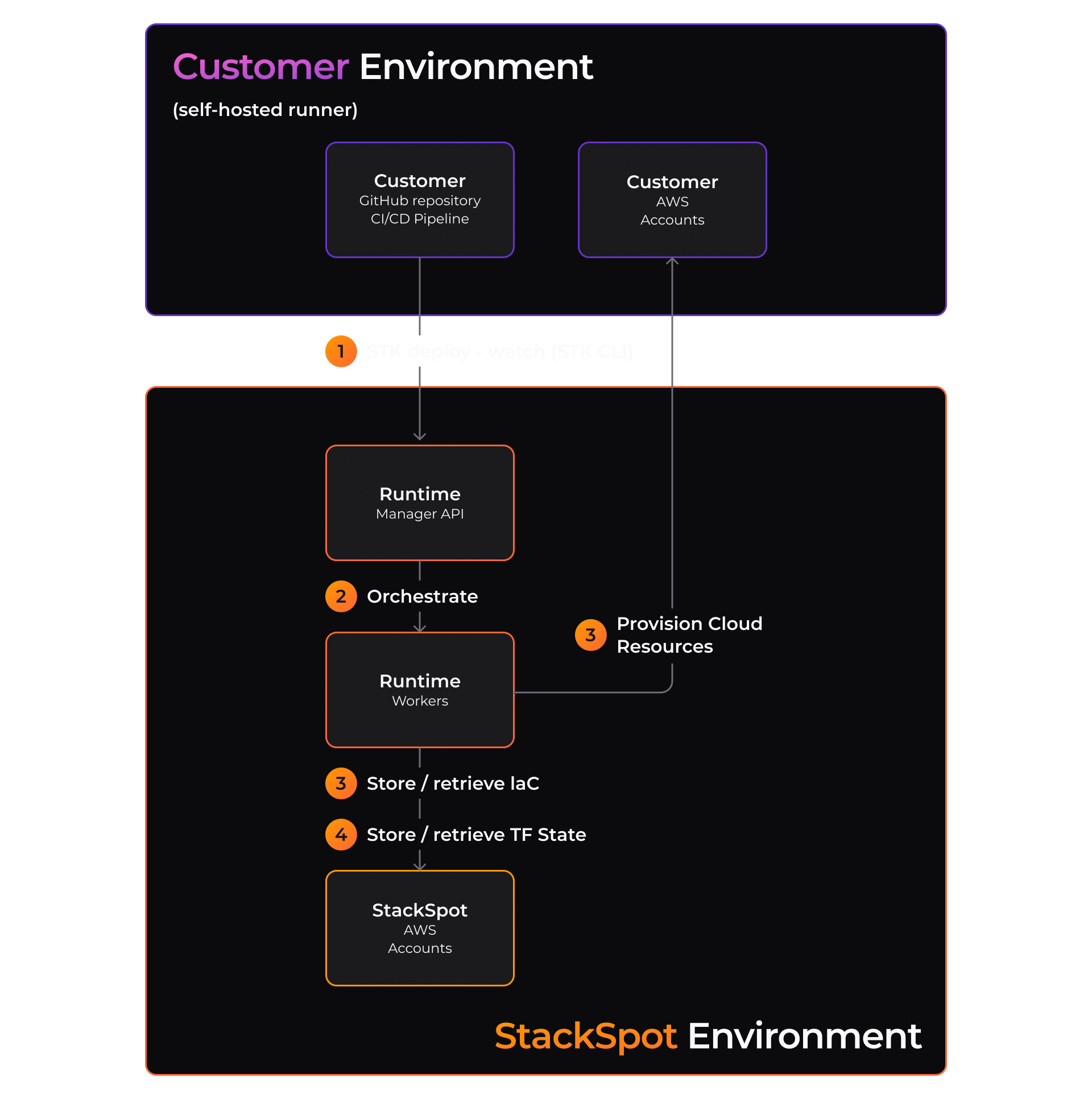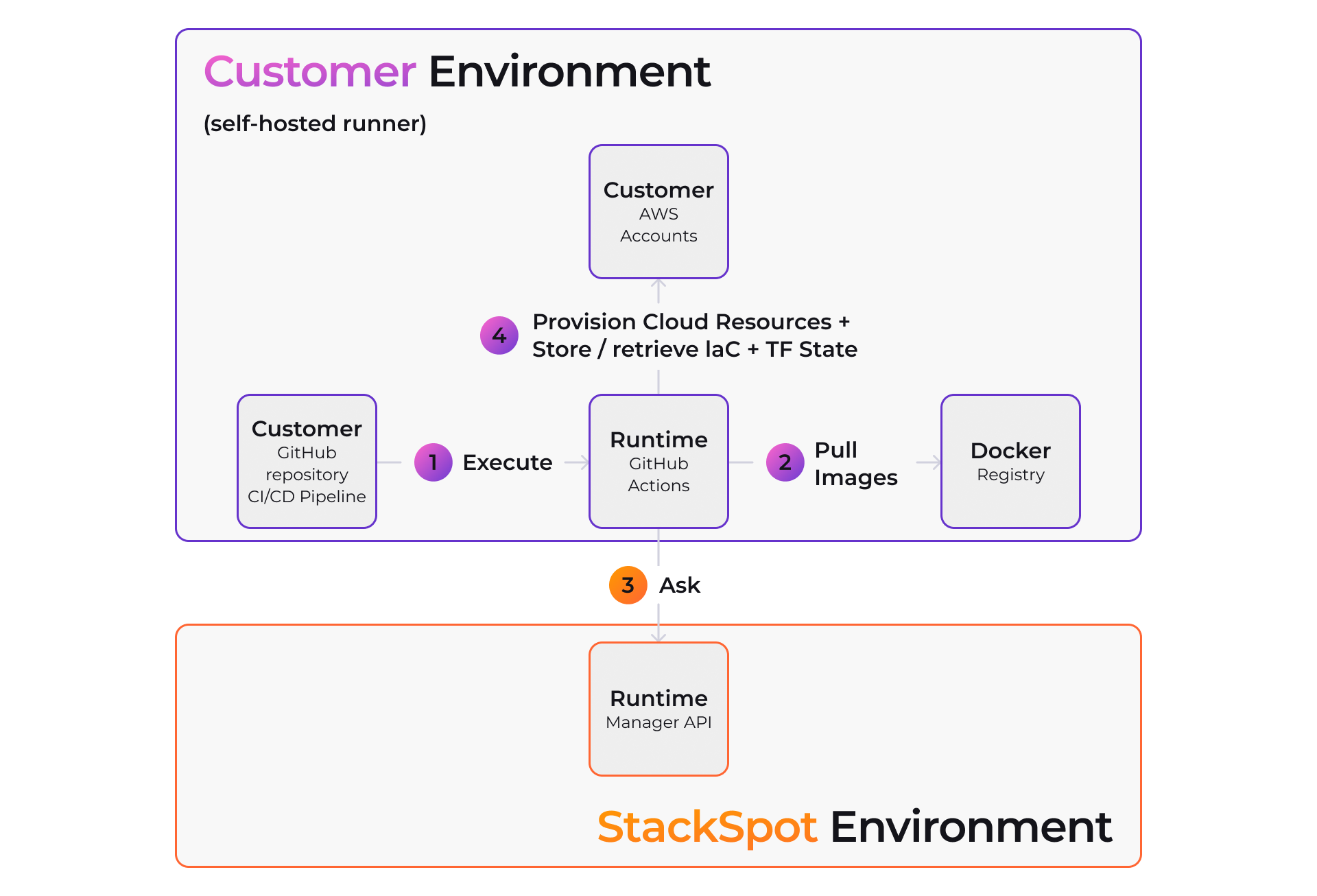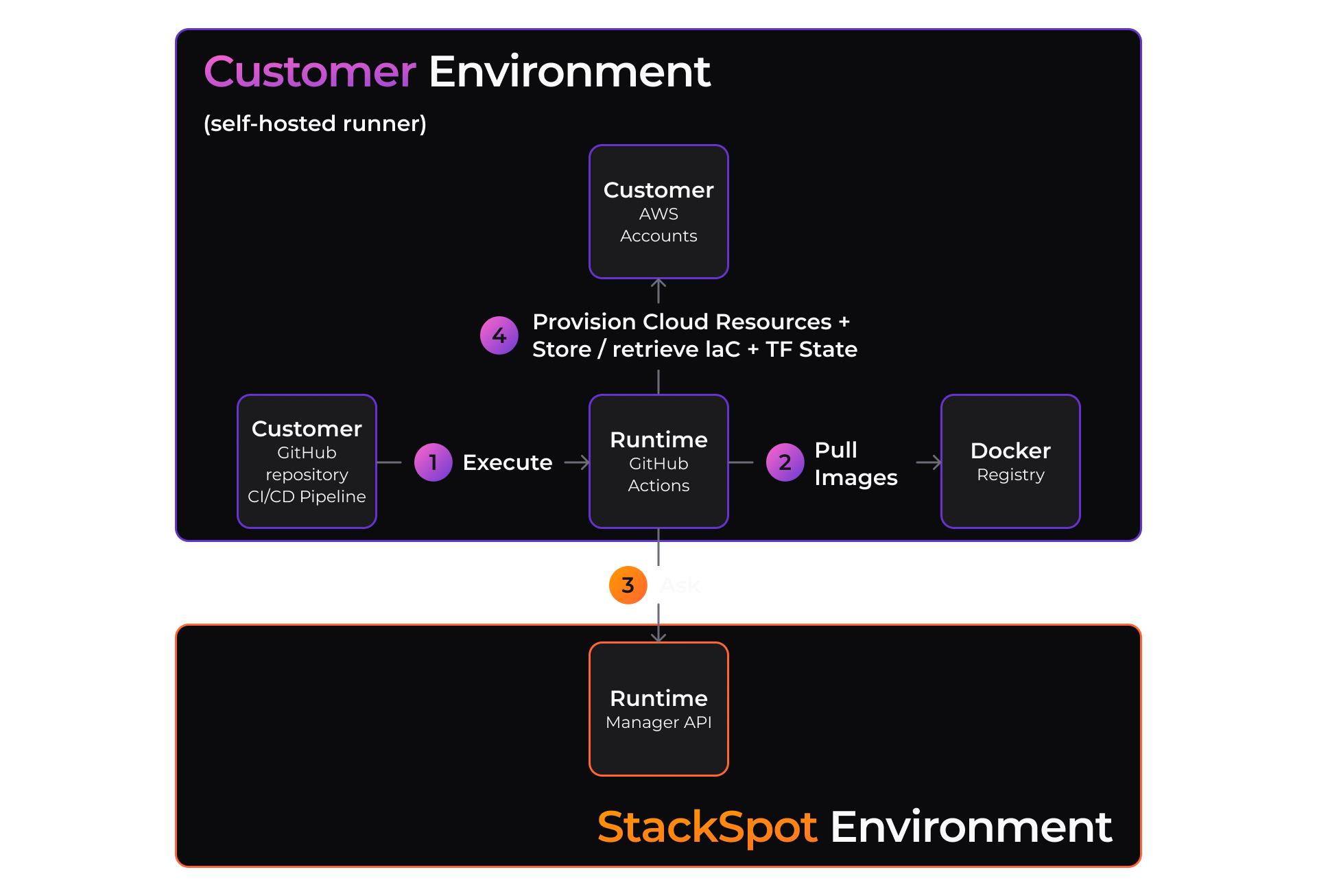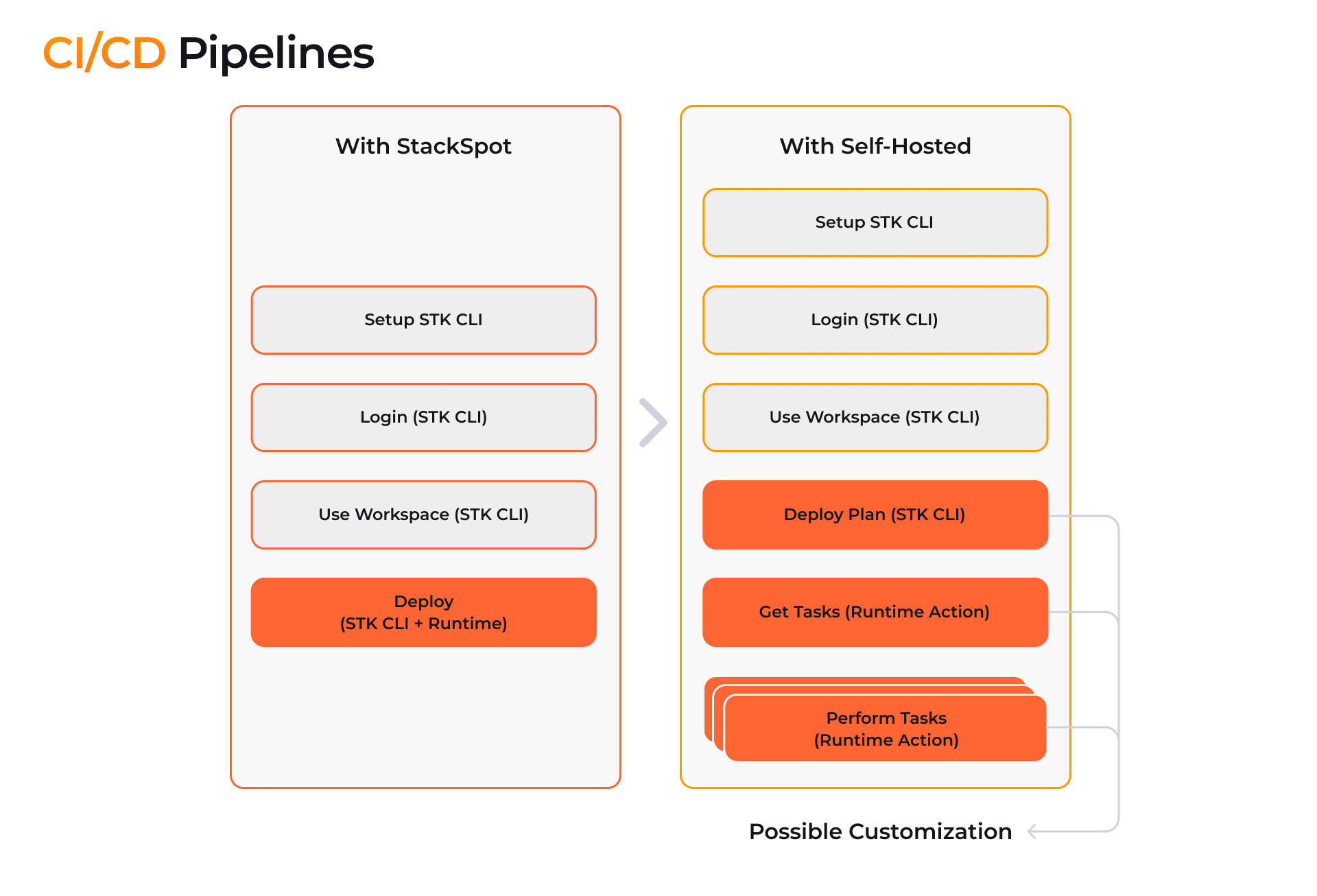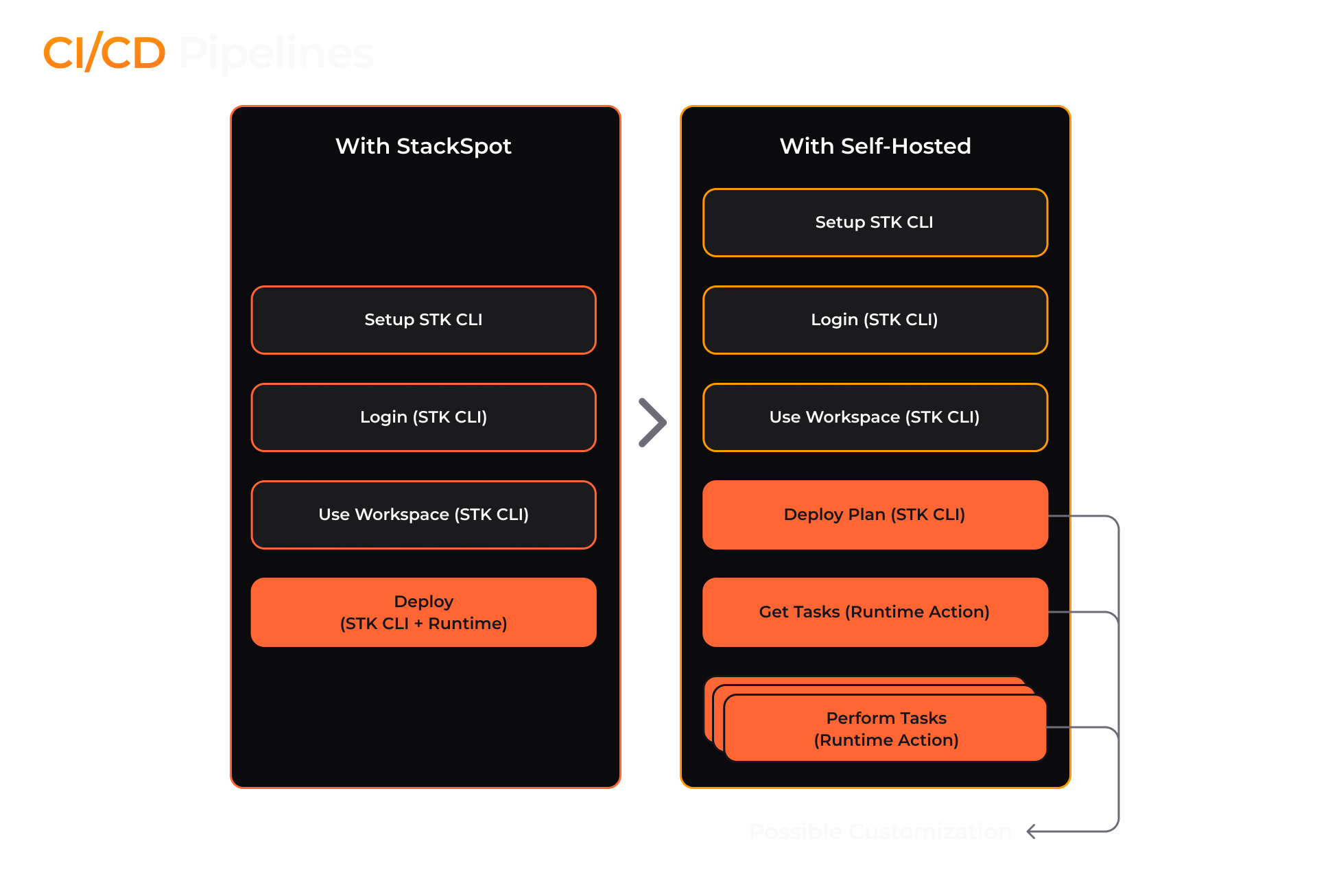About Self-Hosted
In this section, you will find how to configure and use a Self-Host in your deployment pipeline.
Introduction
StackSpot EDP provides a solution for organizations that have security restrictions and need to use their own cloud accounts to deploy Applications.
The platform allows all deployment processes to be executed in Organization-managed infrastructure, ensuring that information and artifacts, such as tfstate files and IaC (Terraform) files, remain within the customer's account. This deployment method is called Self-Hosted Runtime.
The Self-Hosted Runtimes adds steps to your Workflow for provisioning cloud resources, using your organization's runners. Currently, Self-Hosted supports only GitHub Actions.
The deployment process consists of executing four actions in your pipeline on GitHub Actions:
- Orchestrate all inputs to create the cloud resources;
- Generate the IaC (Terraform) code;
- Deploy the IaC (Terraform) code;
- Destroy resources (Terraform).
